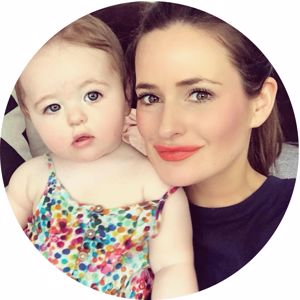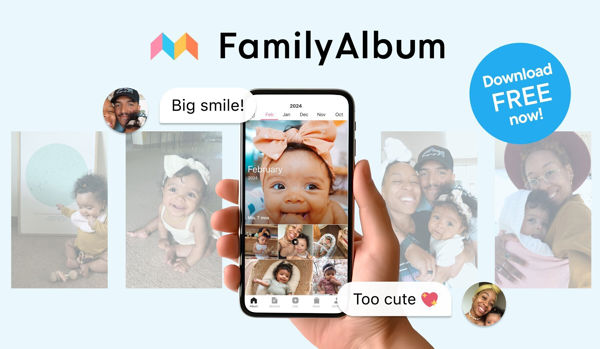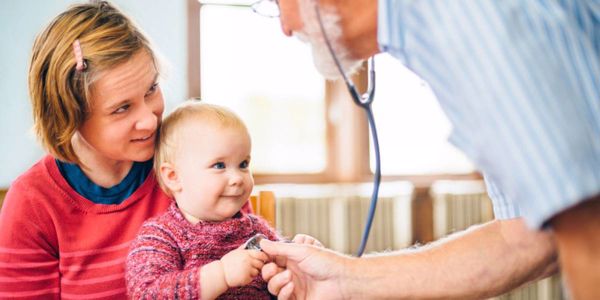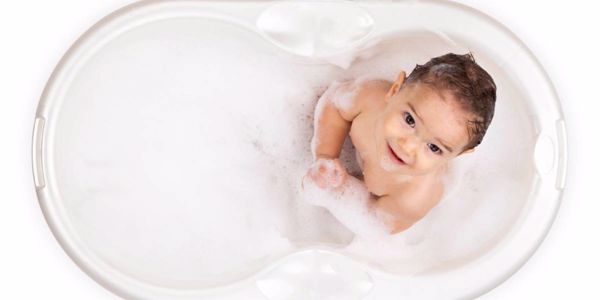On Monday evening, as we'd pulled the plug on the bathwater, we were met with the usual cries of "I'm not getting out", and "I'm swimming". There was my 3-year-old, 'swimming' happily in very shallow water on his front, making waves in the tub and generally having a great time.
The very next second, a Billy-made wave splashed right into his face, and he started to cough and splutter. My husband grabbed him out of the bath, bundled him up into a towel and within a few seconds, the incident was forgotten about. We got Billy and his sister ready for bed, read them their books, and tucked them both happily up in their beds for a great night's sleep.
Midnight came around, and we were woken to the sound of an aggressive seal-like cough and found Billy sat up in bed, in a lot of distress.
"CROUP!" was the first thing that came to mind. Now fully awake, my mind then went back to the events of the evening, and a few Googles later, I'm dialling 111 because I'm suddenly panicking about secondary drowning. Not only was he barking like a seal, but his chest was also whistling and wheezing loudly.
111 ran through the usual questions and concluded pretty quickly that an ambulance would need to be sent, but by the time it arrived Billy had settled back down to sleep and his breathing was much quieter. The paramedics listened to his chest and back, and were concerned they could hear something fuzzy going on the left-hand side of his lungs, so they decided Billy had to be seen by a doctor, and off to A&E we went.
Long story short, a fair few hours later, Billy got the all-clear and we were on our way home.
Part of me felt as though I'd overacted, but I knew I just couldn't take any chances. Putting things into perspective, dry and secondary drowning only account for 1-2% of all drownings, and had he not woken up in the night displaying some of the symptoms, I wouldn't have given it a second thought.
What is Secondary Drowning?
According to Simply Swim, "secondary drowning happens when a little water causes a condition called a laryngospasm, which is where the larynx is irritated and the airways become restricted. Laryngospasm is dangerous because it can cause a shock reaction within the body known as neurogenic pulmonary oedema. This causes the heart and lungs to suffer an increase in pressure and prevents the absorption of enough oxygen to sustain life. If this condition is untreated, a casualty can quickly deteriorate and even die.
Fortunately, the symptoms of laryngospasm are fairly easy to spot. In children, you'll notice a high-pitched sound as they try to breathe, gasping and coughing as they try to get more air into their lungs. They may also turn blue as oxygen levels fall, often causing drowsiness, and incontinence can be another symptom. All of these signs usually become apparent within a short time after someone is rescued but, in some cases, there can be a delay of up to 24 hours."
What is the Difference Between Dry and Secondary Drowning?
Interestingly, on writing this blog post, I noticed there's no information on the NHS website I can find about dry drowning or secondary drowning, but on researching, I found a great article in Mother & Baby magazine, with comments from GP Dr Philippa Kaye.
They state that dry drowning is when "No water enters the lungs. Instead, the act of breathing in the water causes the upper airways and vocal cords to spasm and close, so no air can enter the lungs. Symptoms develop straight away after any event in the water."
"Secondary drowning does involve breathing in water: here, the airways open up instead of closing off and there is a build-up of fluid in the lungs. In secondary drowning, symptoms do not occur straight after an incident in the water but tend to occur at least an hour afterwards, and up to 24 hours afterwards."
The symptoms of dry drowning and secondary drowning are the same:
- Coughing: persistent coughing is a sign something isn't right and you need to contact your GP
- Shortness of breath: rapid shallow breathing, nostril flaring or seeing gaps between your child's ribs means breathing is hard work. You should seek medical help immediately.
- Chest pain or tightness
- Vomiting: a sign of stress from the body as a result of the lack of oxygen.
- Blue lips
- A behaviour change: such as forgetfulness, tiredness or irritability - all of these could be a sign that the brain is not getting enough oxygen.
Any type of drowning can happen in very shallow water, and as soon as symptoms of dry or secondary drowning are apparent, it's important to get emergency medical help very quickly.






